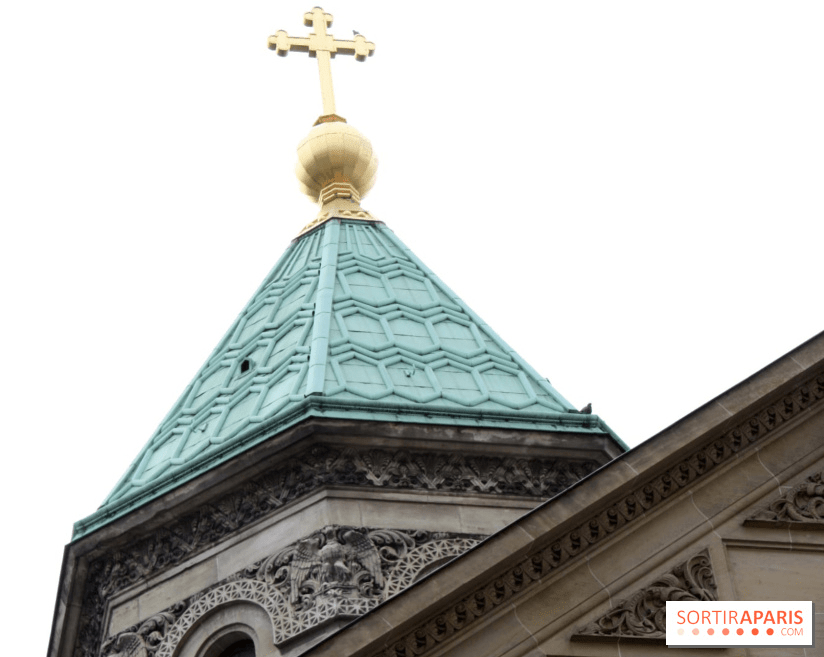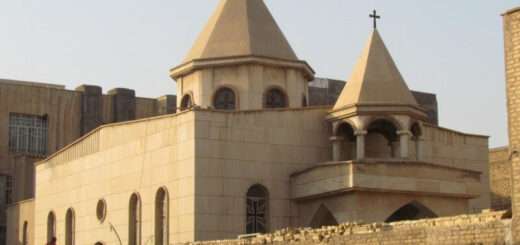ARMENIAN HERITAGE, MONUMENTS, AND PLACES IN PARIS

When walking through certain streets in Paris and its suburbs, one can see traces of the history of an uprooted people: the Armenian community. Having arrived in France under difficult circumstances, since the beginning of the 20th century, they have managed to build places of remembrance, culture, worship, and community life. In Paris, these traces are visible in churches, museums, shops, and restaurants, bearing witness to the deep roots of a diaspora that was forced to flee in order to rebuild itself.
The arrival of Armenians in Paris is rooted in the dramatic history of the 1915 Armenian genocide carried out by the Ottoman Empire. This tragedy led to a massive dispersion of Armenian populations seeking refuge in Europe, particularly in France, which appeared to be a welcoming country. The community grew further after World War II, marked by new arrivals fleeing communist regimes in the Caucasus and the East.
There had already been previous waves of migration to Paris and the Île-de-France region, but it was really after 1915 that the exodus intensified, paving the way for the formation of a structured Armenian diaspora. In addition to fleeing the genocide, the search for work and the opportunity for a safer life also motivated migration, with some arrivals—artisans, merchants, students, political refugees—seeking to rebuild their lives far from their homeland.
In Paris itself, one of the first centers developed in the 9th arrondissement, where the community settled in the 1920s and created businesses, associations, and cultural structures. Other suburban towns such as Alfortville, Issy-les-Moulineaux, Clamart, and Arnouville also bear witness to the Armenian presence.
Discover Armenia’s heritage in Paris through the witnesses of its history: its churches, cathedrals, museums, libraries… before treating yourself to a meal in one of the capital’s Armenian restaurants.
The Cathedral of the Holy Cross of the Armenians
The building that houses the Armenian Catholic community in Paris is located at 13 rue du Perche, in the 3rd arrondissement, in the Marais district. Originally designed as the Church of Saint-Jean-Saint-François in the early 17th century, the building was assigned to the Armenian community in 1970.
Outside, its elegant façade combines alternating light and dark bands, reflecting a reconstruction in classical and then neoclassical style, with a monumental porch designed by architect Victor Baltard in 1855. The modest entrance on this street in the Marais district conceals an unexpected space.
Inside, visitors will discover a basilica nave covered with barrel vaults and two historic organs by Aristide Cavaillé-Coll, classified as Historic Monuments. The walls are adorned with major paintings by Ary Scheffer and Hugues Taraval, and the choir reveals an altar surmounted by a gilded tympanum depicting Glory. The cathedral hosts services in Armenian and French, commemorative ceremonies, and concerts.
The Cathedral of Saint John the Baptist in Paris
This cathedral of the Armenian Apostolic Church is located at 15 rue Jean-Goujon, in the 8th arrondissement, a stone’s throw from the Champs-Élysées. It was built between 1902 and 1904, thanks to the patronage of the wealthy Armenian of Georgian origin, Alexandre Mantacheff, who wanted to provide the Armenian community in France with a temple of authentic Armenian architecture.
On the outside, the facade features elements inspired by Armenian architectural art, such as a domed bell tower, an Armenian cross, and geometric patterns. The interior reveals a spacious sanctuary, a central dome, decorative motifs oriented towards the East, and liturgical furniture typical of the Armenian Apostolic tradition. This place is the seat of the Armenian diocese in France and hosts major community ceremonies, including the funeral of Charles Aznavour in 2018.
The Nubar Library
The Nubar Library, located at 11 Square Alboni in the 16th arrondissement, is a cultural institution founded in 1928 by philanthropist Boghos Nubar Pasha under the auspices of the Armenian General Benevolent Union. Its purpose: “to serve as a place for gathering, preserving, and studying the heritage of the ancient Ottoman Armenian world.”
This Art Deco building was inaugurated in 1922 in a sober and elegant style and contains more than 43,000 printed works, Arm
The Armenian Museum of France
Located at 59 Avenue Foch, the Armenian Museum of France was founded in 1949 by Nourhan Fringhian. Housed in a Haussmann-style building, the collection brings together around 1,200 works (sacred objects, manuscripts, sculptures, secular art) retracing more than 3,000 years of Armenian history and culture.
Although currently closed, it is a major site of Armenian memory in Paris, dedicated to preserving, exhibiting, and transmitting Armenian art and history.
The House of Armenian Culture
At the end of a quiet courtyard, the Maison de la Culture Arménienne is a warm and intimate place with simple, traditional decor—paneling, an Armenian flag on the wall, tightly packed tables, and a homey atmosphere. People come here for its restaurant, which may not look like much but offers customers and curious visitors the chance to discover typical Armenian dishes, made with love.
The Armenian Student House – Marie Nubar Foundation
Located in the heart of the Cité Internationale Universitaire in the 14th arrondissement, this Armenian student residence was inaugurated in 1930 on the initiative of Boghos Nubar Pasha and designed by Armenian architect Léon Nafilyan. This beautiful building, with its Armenian stylistic influences, houses 74 student apartments, common rooms, and study areas.





